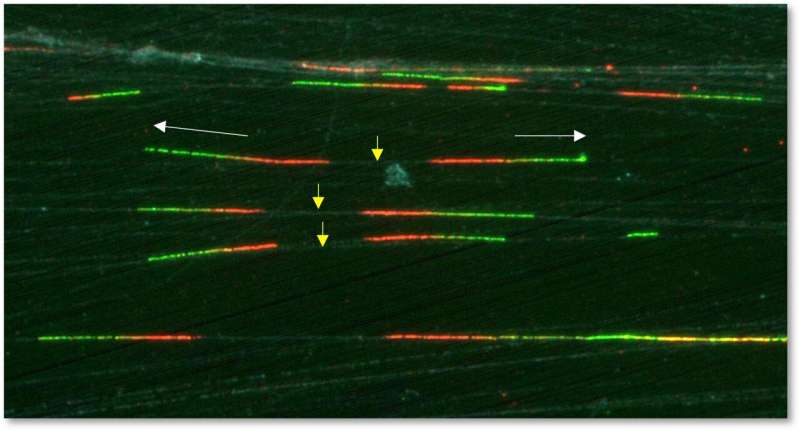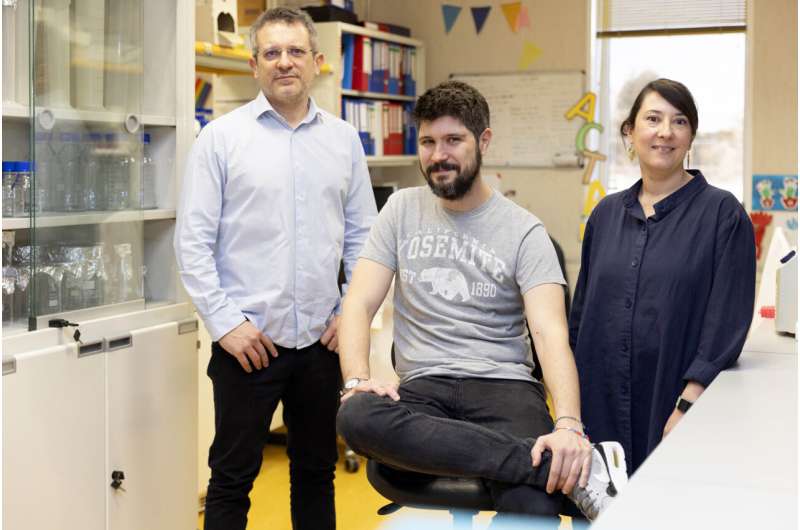This article has been reviewed according to Science X's editorial process and policies. Editors have highlighted the following attributes while ensuring the content's credibility:
fact-checked
peer-reviewed publication
trusted source
proofread
Newly discovered protein prevents DNA triplication

Every time a cell divides, its DNA is duplicated so that the two daughter cells have the same genetic material as their parent. This means that, millions of times a day, a biochemical wonder takes place in the body: the copying of the DNA molecule. It is a high-precision job carried out by specific proteins and includes systems to protect against potential errors that could lead to diseases such as cancer.
One of these anti-failure systems has just been discovered by researchers in the DNA Replication Group at the Spanish National Cancer Research Centre (CNIO), led by Juan Méndez. It is based on a protein that ensures that DNA is copied only once, as it should be, and not twice or more.
The work is published in The EMBO Journal.
When a region of DNA is over-replicated, breaks are created in the molecule, and the likelihood of a cancer-related gene being over-expressed increases (if it is in the over-replicated region); its negative impact on the functioning of the cell would then be greater and it could be the start of a cancer.
Therefore, avoiding excess replication "prevents DNA damage and reduces the chances of oncogenes being amplified," says Méndez.
Copying a sequence of 3 billion parts without errors
The DNA molecule has a double-helix structure. To be copied, the two strands of the helix are first separated and each one serves as a template for the replication machinery to build two new double helices. Completing the process takes hours. In tissues that regenerate very frequently, such as the skin or intestines, cells replicate (and copy DNA) almost continuously.
It is not a simple process. A human DNA molecule has 3 billion chemical pieces, the bases—the famous letters A, T, C, G. The order in which these letters are arranged makes up the genetic information, i.e. the instructions that tell the cell to make this or that protein at any given moment.
If the instructions are wrong—for example, if there are mutations—disease can occur. Therefore, DNA copying is a critical process for the organism, which has developed several molecular mechanisms to avoid errors. The one that CNIO researchers have now discovered involves the RAD51 protein. Its mission, in this context, is to prevent DNA fragments that have already been copied once from being copied again.

Copying starts in thousands of places at once
DNA copying begins at thousands of sites simultaneously, which are called origins in the technical jargon. The proteins responsible for copying attach themselves to these origins and start working, acting like micro-machines.
An initial system for controlling excess replication was already known, which prevents origins from being activated more than once. However, if a second copying process is mistakenly started, the newly discovered anti-failure mechanism comes into play, based on RAD51.
The researchers at CNIO observed that RAD51 temporarily binds to the newly synthesized DNA. If the copying process is inadvertently reactivated, its presence on the new DNA (which now serves as a template for copying) becomes a physical impediment, and the copying machinery cannot continue to advance.
A second brake on re-replication
"We observed that RAD51 acts as a second brake on DNA re-replication," says Sergio Muñoz, first author of the study. In this way, "RAD51 prevents genomic duplications that could arise from re-activated origins."
In their study, the authors write that "DNA re-replication could fuel carcinogenesis by promoting aneuploidy [an incorrect number of chromosomes in the cell] and the formation of heterogeneous cell populations that enhance the adaptability of tumor cells."
The protective role of RAD51 may be particularly important in pre-tumoral lesions, where there is an increased risk of over-replication.
Researchers from the University of Zurich also participated in the study.
More information: Sergio Muñoz et al, RAD51 restricts DNA over-replication from re-activated origins, The EMBO Journal (2024). DOI: 10.1038/s44318-024-00038-z
Journal information: EMBO Journal
Provided by The Spanish National Cancer Research Centre



















